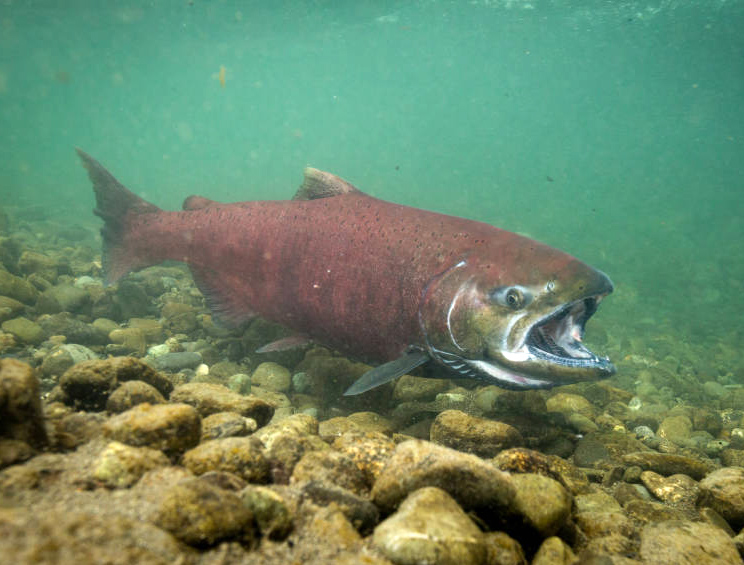Chinook salmon (Oncorhynchus tshawytscha) making its way upstream to spawn. Photo by Ryan Hagerty / USFWS (public domain image).
Official State Fish of Oregon
Oregon designated the chinook salmon (Oncorhynchus tshawytscha) as the official state fish in 1961. All State Fish
Chinook salmon (also known as spring, king and tyee salmon) is the largest of the Pacific salmons. Also the state fish of Alaska, chinook salmon are found from southern California to the Canadian Arctic.
King salmon hatch in fresh water, spend part of their life in the ocean, then return to the fresh water stream where they were born to spawn (they die after spawning). Some salmon travel more than 2,000 river miles over a 60-day period to reach their home streams. Salmon do not feed during this freshwater migration, and their condition gradually deteriorates as stored body materials are used for energy and the development of reproductive products.
Each female salmon deposits from 3,000 to 14,000 eggs in several gravel nests. The newly hatched fish live in the gravel for several weeks (until the nourishment in the attached yolk sac is absorbed). Young salmon then consume plankton and later insects until they migrate to the ocean in their second year of life. While at sea salmon feed on a variety of ocean organisms including herring, pilchard, sandlance, squid, and crustaceans. When sexually mature (between 3 - 7 years of age) salmon return to their home fresh water streams to spawn.

